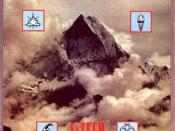Jealousy may be defined as a negative response to a threat that is either real or imagined. In most cases it jealousy results from the actual or potential loss of an intimate partner. Research into jealousy is limited and little is known about the range of experiences and behaviors associated with this emotion. (Stewart 153.) However, it is clear that jealousy affects some people more than others. This reflects not only the fact that the levels of exposure to actual or potential infidelity is different for different people but it also is a result of differing sensitivities to the threats to relationships. One personality element that is commonly assumed to be related to jealousy is self esteem. In theory, persons with low self-esteem are more likely to experience jealousy because they are typically insecure and dependent on others. This insecurity leads to susceptibility to threat and ultimately jealousy. (Stewart 153).
Five individual articles under this topic from separate journals were critiqued. Most of the studies were a form of random sampling either using a questionnaire or self report. Subjects were mostly college students in three of the studies. One of the other studies examined a married Dutch sample while the last study examined jealousy in a random community sample.
METHOD
The subjects in the first article were all undergraduates: 102 females and 90 male students with a mean age of 19.04. This study investigated the relationship between jealousy and low self-esteem. It did so by testing differences between correlation coefficients that were examined separately for males and females. High scores indicated high jealousy. Self esteem was observed on scores on the Self-acceptance Scale. High scores mean high self-esteem (Stewart 153).
The second article studied the effects of relationship and self-esteem threats on the likelihood of romantic jealousy. Subjects were 42...



Jealousy
This is a really interesting essay!
I would have put in the title that this is relating to sexual jealousy.
2 out of 2 people found this comment useful.